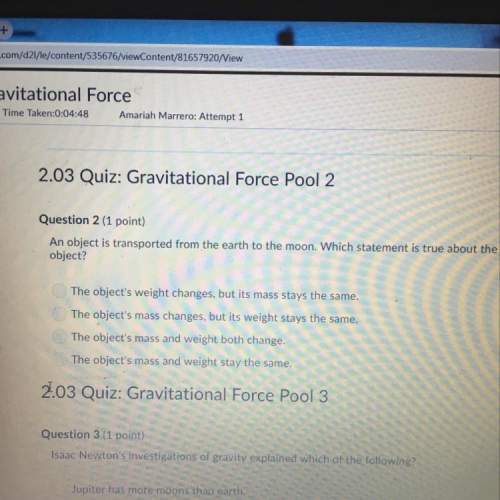
Chemistry, 01.10.2019 00:00 genyjoannerubiera
You are given an aqueous solution and are asked to analyze it for the presence (or absence) of ag+(aq), ca2+(aq), and/or hg2+(aq) ions. there are no other metal ions in the solution. you add aqueous hydrochloric acid (hcl) to the solution, and nothing appears to happen. you add aqueous sulfuric acid (h2so4) to the solution, and a white precipitate forms. you remove (via filtration) the white precipitate, and then add aqueous hydrogen sulfide (h2s) to the solution that remains. a black precipitate forms. based on these observations, which ions are present in the original solution? (a) ag+(aq), ca2+(aq), and hg2+(aq) (b) only ag+(aq) and hg2+(aq) (c) only ca2+(aq) and hg2+(aq) (d) only ag+(aq) and ca2+(aq) (e) only hg2+(aq)

Answers: 2
Another question on Chemistry

Chemistry, 21.06.2019 18:40
Determine the energy released per kilogram of fuel used. given mev per reaction, calculate energy in joules per kilogram of reactants. consider 1 mole of tritium plus 1 mole of deuterium to be a mole of “reactions” (total molar mass = 5 grams).
Answers: 1

Chemistry, 22.06.2019 05:30
The table describes how some substances were formed substance 19 description formed by boiling pure water formed by combining three hydrogen atoms to every nitrogen atom formed by adding 5 g of sugar to 1 l of water formed by compressing carbon under high pressure based on the given descriptions, which substance is most likely a mixture?
Answers: 1

Chemistry, 22.06.2019 05:30
Arecipe calls for 1.2 cups of oil. how many liters of oil is this?
Answers: 2

Chemistry, 22.06.2019 14:30
What is the relationship between wind and ocean waves? question 17 options: wind moving at higher speeds will transfer more energy to the water, resulting in stronger waves. wind moving at higher speeds will transfer energy over a larger part of the ocean water, resulting in waves with a shorter wavelength. winds moving at higher speeds with cause water to move forward at faster rates, causing larger ocean waves. winds moving at higher speeds will affect deeper water, resulting in waves that move at a faster rate. how do temperature and salinity affect deepwater currents? question 15 options: as temperatures and salinity levels of water increase, the water rises to the surface where it creates currents as it moves to colder regions. they create changes in wind direction, moving denser water in the same direction as the wind and causing the deepwater circulation patterns found in the ocean. they equalize the forces on undersea currents caused by the coriolis effect as they replace more dense water with less dense water. they create density differences that cause dense deepwater currents to flow toward the equator where they displace less dense, warmer water above them.
Answers: 2
You know the right answer?
You are given an aqueous solution and are asked to analyze it for the presence (or absence) of ag+(a...
Questions






English, 19.07.2019 17:30


Chemistry, 19.07.2019 17:30


Geography, 19.07.2019 17:30


History, 19.07.2019 17:30



Biology, 19.07.2019 17:30

English, 19.07.2019 17:30







